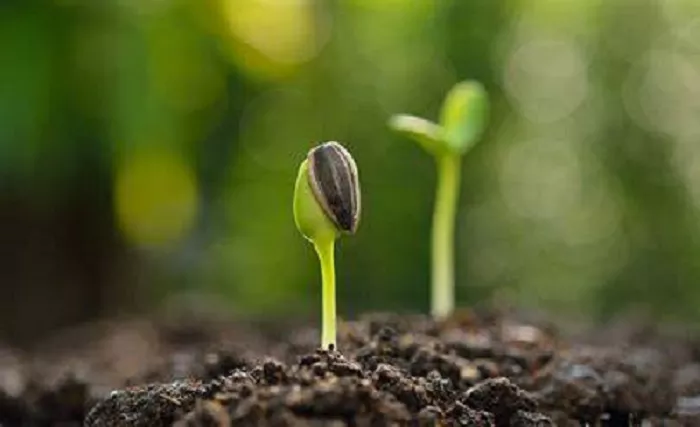Sunflowers, with their radiant blooms and cheerful disposition, are a beloved addition to any garden. Whether you’re a seasoned gardener or a novice green thumb, planting sunflower seeds is a rewarding and straightforward process. This guide will walk you through everything you need to know to grow these majestic flowers from seed to bloom.
Preparation is Key
Before you begin planting, it’s essential to prepare both your seeds and your garden. Sunflowers are hardy plants, but a little preparation can go a long way in ensuring a successful growth cycle.
Selecting the Right Seeds
Sunflowers come in a variety of types, from the towering giants to the more compact dwarf varieties. Choose seeds based on your garden’s size and your desired aesthetic. For example, if you have limited space, dwarf sunflowers are a perfect choice. On the other hand, if you want to make a bold statement, go for the taller varieties.
Timing Your Planting
Sunflowers thrive in warm weather. The ideal time to plant sunflower seeds is after the last frost of spring, when the soil temperature is above 50°F (10°C). This usually falls between late April and early June, depending on your location. Planting at the right time ensures that your seeds will germinate quickly and grow strong.
Soil and Site Selection
Sunflowers are not overly fussy about soil, but they do have some preferences. Understanding these preferences will help you create the best environment for your seeds.
Choosing the Right Soil
While sunflowers can grow in a variety of soil types, they prefer well-drained soil that is rich in organic matter. A pH level between 6.0 and 7.5 is ideal. If your soil is heavy clay or sandy, consider amending it with compost or well-rotted manure to improve its texture and fertility.
Picking the Perfect Spot
Sunflowers need plenty of sunlight to grow and bloom. Choose a location that receives at least six to eight hours of direct sunlight per day. Avoid planting them in the shade of buildings or large trees. Additionally, ensure that the area has good air circulation to prevent fungal diseases.
Planting the Seeds
With your seeds and garden site prepared, it’s time to plant. Follow these steps for the best results.
Preparing the Soil
Loosen the soil in your chosen spot to a depth of about 12 inches. Remove any weeds or debris that might compete with your sunflowers for nutrients. If you’re planting in rows, space them about 30 inches apart to give your plants plenty of room to grow.
Sowing the Seeds
Create small holes about 1 inch deep and 6 inches apart. Place one or two seeds in each hole, then cover them with soil. Water the area gently but thoroughly to ensure good soil-to-seed contact. Keep the soil consistently moist but not waterlogged until the seeds germinate.
Caring for Your Sunflowers
Once your seeds have germinated and your sunflowers begin to grow, proper care is crucial for their health and beauty.
Watering
Sunflowers need regular watering, especially when they are young. Aim to provide about 1 inch of water per week, either through rainfall or supplemental watering. As the plants mature, you can reduce the frequency but increase the amount of water to encourage deep root growth.
Fertilizing
Sunflowers benefit from a balanced fertilizer, especially during their early growth stage. Apply a slow-release granular fertilizer according to the package instructions. Avoid over-fertilizing, as this can lead to weak, leggy plants.
Staking
Taller sunflower varieties may need support to prevent them from falling over, especially in windy conditions. Use sturdy stakes and soft ties to support the main stem without damaging it. Be sure to stake the plants early in their growth to avoid disturbing the roots later on.
Dealing with Pests and Diseases
Sunflowers are generally hardy plants, but they can still fall prey to pests and diseases. Keep an eye out for common issues and address them promptly.
Common Pests
Aphids, slugs, and birds are some of the most common pests that can affect sunflowers. Aphids can be controlled with a strong spray of water or insecticidal soap. Slugs can be deterred with copper tape or organic slug pellets. To protect your seeds from birds, consider covering the planted area with netting until the seedlings emerge.
Disease Prevention
Good air circulation and proper watering techniques can help prevent fungal diseases. Avoid overhead watering, as this can lead to wet foliage and increase the risk of disease. If you notice any signs of disease, such as yellowing leaves or mold, remove the affected parts and treat the plant with a fungicide if necessary.
Harvesting and Enjoying Your Sunflowers
After months of care, it’s time to enjoy the fruits of your labor. Sunflowers are not only beautiful but also useful.
Cutting for Bouquets
If you want to bring the beauty of sunflowers indoors, cut the stems in the early morning or late afternoon when the flowers are fully open. Use a sharp knife or garden shears and cut at an angle to promote better water uptake. Place the cut flowers in a vase with fresh water and enjoy their vibrant blooms.
Harvesting Seeds
If you plan to harvest sunflower seeds for eating or replanting, wait until the back of the flower head turns yellow and the seeds are plump and brown. Cut the flower head, leaving about a foot of stem attached. Hang it upside down in a dry, well-ventilated area to finish drying. Once the seeds are fully dry, rub the flower head gently to release the seeds.
Conclusion
Growing sunflowers from seed is a delightful and rewarding experience. With the right preparation, care, and attention, you can enjoy these beautiful flowers in your garden and beyond. Whether you’re planting for their aesthetic appeal or for their edible seeds, sunflowers are a wonderful addition to any garden. So go ahead, plant some seeds, and watch as these cheerful flowers brighten up your world.


